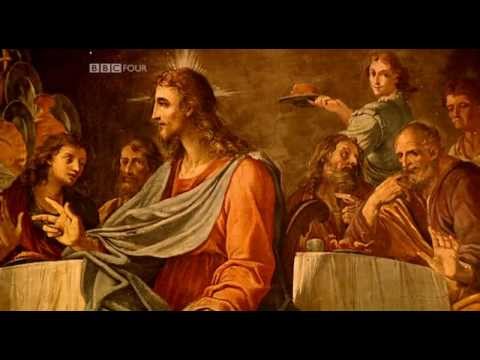Here at the Church of Santa Maria Magdalena, in the heart of Rome, administering mass is very much a male affair. In fact, throughout the Roman Church, the corridors of power are full of men. Women have a rôle, but it’s as a mother; virgin; wife. The churches argued that it’s a model which extends right back to the time of Jesus himself. The four Gospels all record that he chose twelve disciples, and that they were all men. It follows, they argued, that the priestly office should be held only by men, in imitation of Jesus’s decision two thousand years ago.
But among the many remarkable discoveries in Nag Hammadi were gospels which painted women in a very different light, the way [that] they came to be portrayed within the canonical Gospels. In Matthew, Mark, Luke, and John, women are barely mentioned, and certainly Jesus didn’t have any female disciples, but in the suppressed Gospels of Philip and Mary, and in the Acts of Thecla and Paul, the picture is very different.
Far from being minor characters, these gospels reveal a church where in the first centuries after Jesus’s death, women took centre stage. And even more surprising: they suggest that in the years of Jesus’s life, women were even involved at the heart of his mission. And one of these texts suggests that there was one woman in particular who played a very important rôle in Jesus’s ministry. She’s someone who’s more usually associated with prostitution and madness than teaching the word of G‐d. She’s the bad girl of Christianity: Mary Magdalene.
For centuries, in art and literature, Mary Magdalene has been depicted as the repentant sinner: the woman who washed Jesus’s feet with her tears and dried them with her hair. But with the new discoveries of Nag Hammadi, a radically different and far more controversial picture of Mary is emerging.
In these texts, Mary appears very frequently as one of Jesus’s prominent disciples, and in one of the Nag Hammadi documents, in a text attributed to another of Jesus’s apostles, there’s an even more striking revelation. In a relatively unknown work, the Gospel of Philip, Mary Magdalene plays a key rôle and it is implied within that Gospel that her relationship with Jesus wasn’t just spiritual.
…wow.
The accuracy of the accounts of these non canonical gospels reflecting authentic traditions of the historical Jesus has been questioned by historians, with many of them, at the earliest, probably being written a generation later than the last canonical gospel. Though I have heard of some scholars trying to tease out parables from the Gospel of Thomas that sound more earlier than similar versions found in the canonical gospels.
They often are interesting primary sources that give us a look into the concerns and practices of the Christian groups that wrote them.



